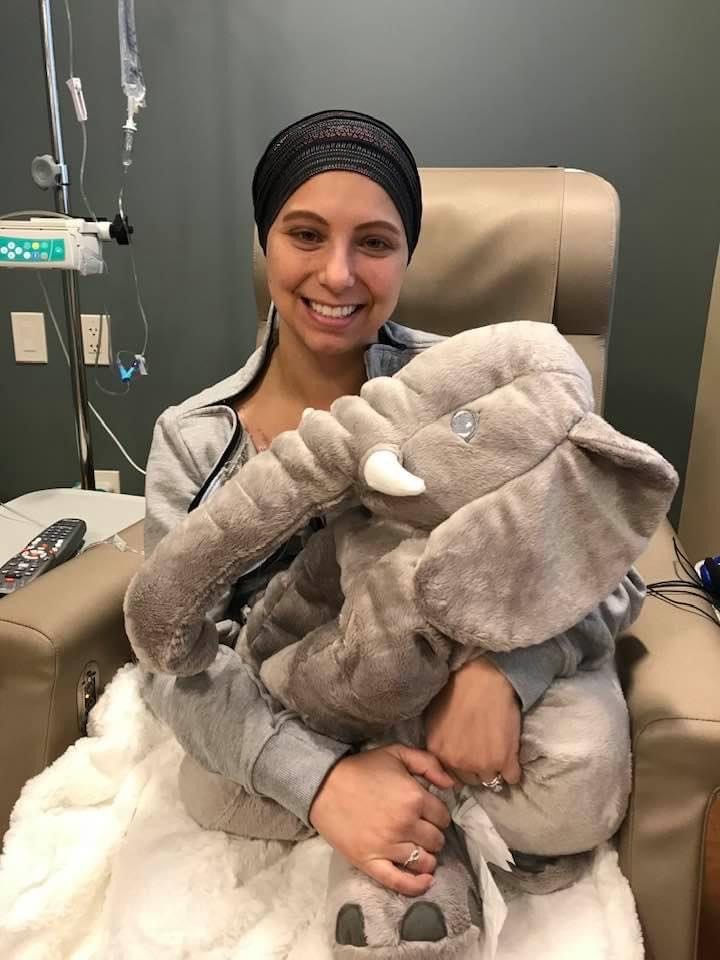Get to know your breasts!
[Allina Health Newsroom, October 09, 2023]
"Keep an eye on your breasts. Nobody knows them better than you,” said Dr. Natasha Rueth, a surgical oncologist with Allina Health Cancer Institute. That advice was critical for Ellie Henderscheid, who was 29 years old when she was diagnosed with breast cancer in 2019. Her long-time primary care physician found a lump in her breast during her annual exam.
“She’s just always done breast exams,” said Henderscheid, a breast cancer survivor and Allina Health employee. “She was like, ‘What’s this? Is this new?’ I told her it had been there awhile, and her demeanor changed suddenly.”
Breast lumps aren’t unusual, according to Dr. Rueth, who didn’t treat Henderscheid. “The things that concern me are lumps that don’t go away. The first thing I usually tell a woman is to give it a menstrual cycle or two because fibroglandular tissue in the breast can fluctuate with our cycles,” said Dr. Rueth.
In Henderscheid’s case, the lump was indeed troublesome. While having breast cancer at 29 years old is rare, it isn’t unheard of. The Centers for Disease Control and Prevention (CDC) says 9% of all new breast cancer cases in the United States are in women younger than 45 years old. Dr. Rueth strongly encourages patients to do self-examinations, as well as get annual mammograms starting at age 40.
Finding a lump
If you have a persistent or concerning lump, Dr. Rueth suggests going to a breast center. “You want to go where you have experts who specialize in breasts. They can do a good clinical exam because they see breasts and breast tissue every day,” said Dr. Rueth. “You want specialized radiologists who look at breast ultrasounds and mammograms all day, every day, to participate in your diagnosis.”
A biopsy is the most accurate way to diagnose breast cancer if a mammogram or ultrasound is inconclusive. For people who may view a benign biopsy (cancer-free) as a waste of time, Dr. Rueth reminds us that biopsies are crucial to reducing the chances of a misdiagnosis, even if they come back benign.
“We do a certain number of benign biopsies. If we are not doing enough benign biopsies, then we aren’t being aggressive enough, and we are putting ourselves at risk of missing cancer,” said Dr. Rueth. “A benign biopsy isn’t a failure on our part. It's a very thorough investigation and a very important tool for us to use, said Dr. Rueth.
By the numbers
It is important to be treated by experts who are up to date on cutting-edge therapies and advances in care. About 42,000 women and 500 men die each year in the United States from breast cancer, according to the CDC. However, when breast cancer is detected early, the five-year relative survival rate is 99%.
“I credit Allina Health and all my doctors. They saved my life,” said Henderscheid, who is now cancer-free. She echoes Dr. Rueth’s sentiments about self-checks, and she also wants people to remember to go to their primary care appointments.
“Get your annual exams. They can help save your life,” said Henderscheid.
Learn more about Allina Health Cancer Institute here.
If you’d like to schedule a primary care appointment, click here.
